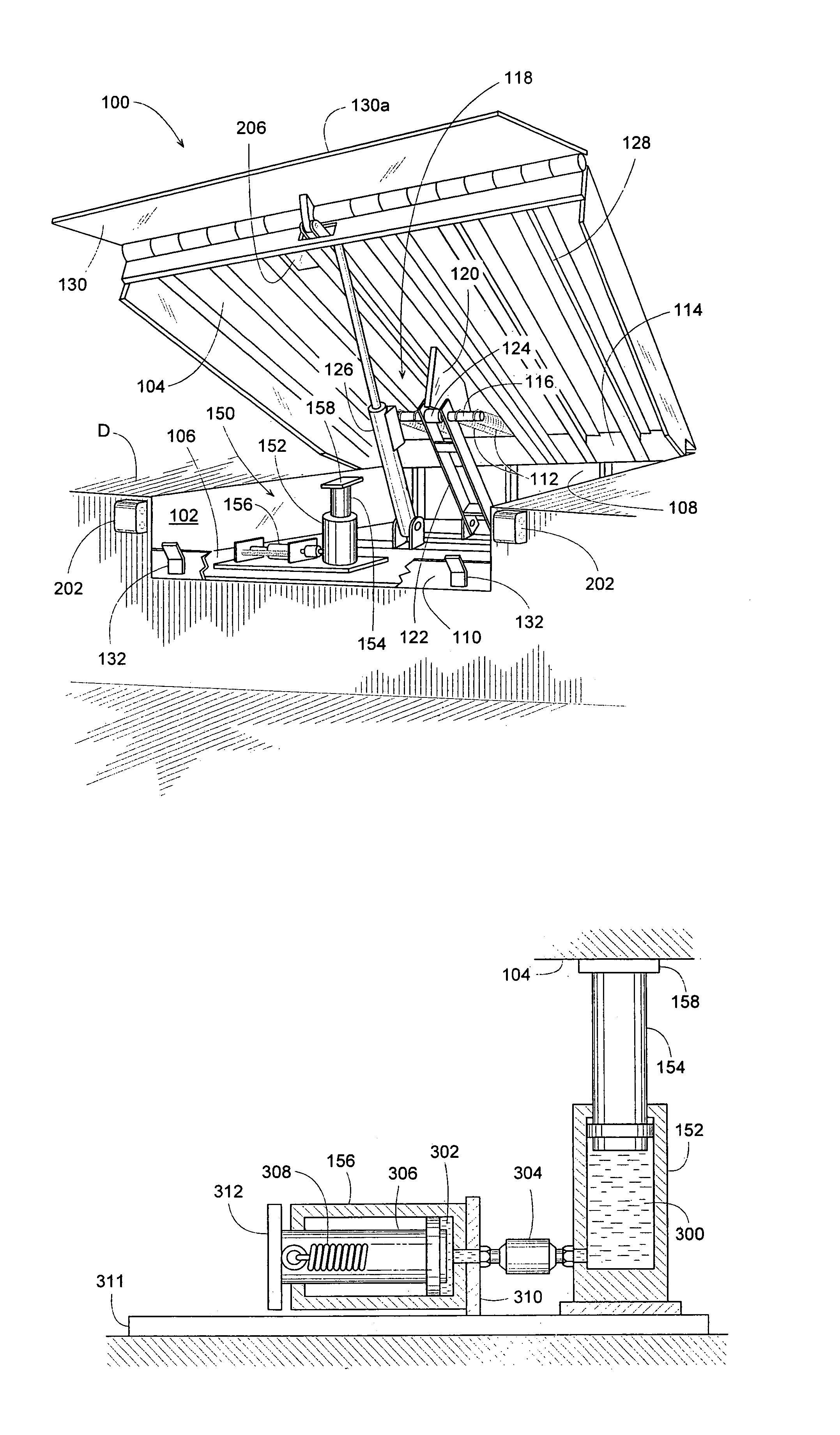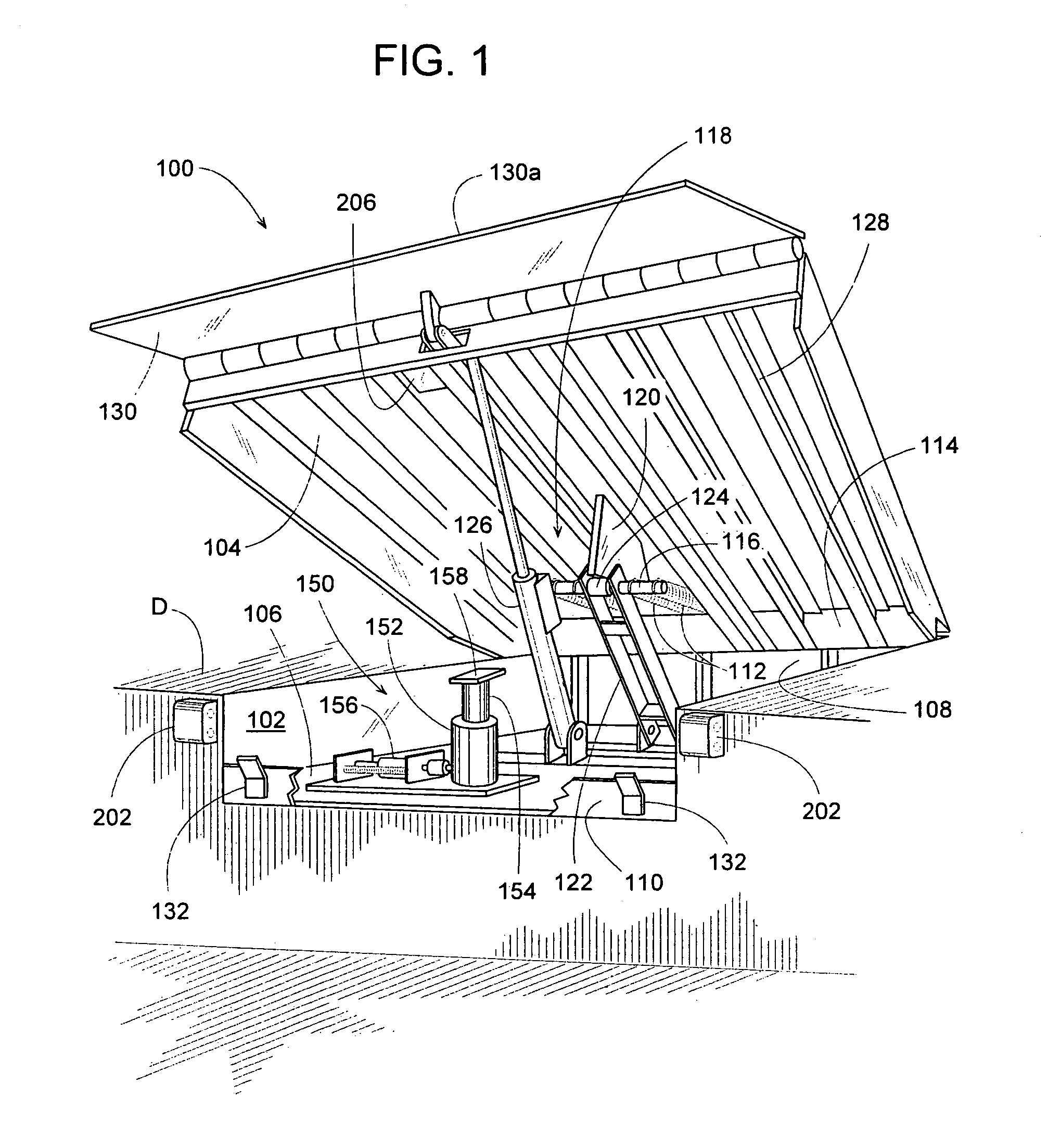Stump-out apparatus for a dock leveler
a leveler and apparatus technology, applied in the field of dock levelers, can solve problems such as serious problems for fork truck operators on the deck, and damage to equipment and cargo
- Summary
- Abstract
- Description
- Claims
- Application Information
AI Technical Summary
Benefits of technology
Problems solved by technology
Method used
Image
Examples
Embodiment Construction
[0031]Numerous examples and techniques are described for addressing the problem of stump-out in dock leveler applications. In some examples, apparatuses are able to engage a dock leveler during operation to provide a continuously engaging sensor and stopping device. These apparatuses may avoid some of the problems with conventional safety leg applications and others, as the apparatuses are able to protect against free fall over a range of dock leveler operating positions, above and below dock level, and simultaneously avoid stump-out.
[0032]In some examples, a moveable pedestal may engage a dock leveler throughout a range of dock leveler operating positions. That engagement may be by biased contact, latching or the like. The pedestal may sense the beginning of free fall condition and prevent the dock leveler from continuing to free fall during a premature vehicle departure. The pedestal may float with the dock leveler as that leveler moves below or above dock level, thereby providing...
PUM
 Login to View More
Login to View More Abstract
Description
Claims
Application Information
 Login to View More
Login to View More - R&D
- Intellectual Property
- Life Sciences
- Materials
- Tech Scout
- Unparalleled Data Quality
- Higher Quality Content
- 60% Fewer Hallucinations
Browse by: Latest US Patents, China's latest patents, Technical Efficacy Thesaurus, Application Domain, Technology Topic, Popular Technical Reports.
© 2025 PatSnap. All rights reserved.Legal|Privacy policy|Modern Slavery Act Transparency Statement|Sitemap|About US| Contact US: help@patsnap.com



